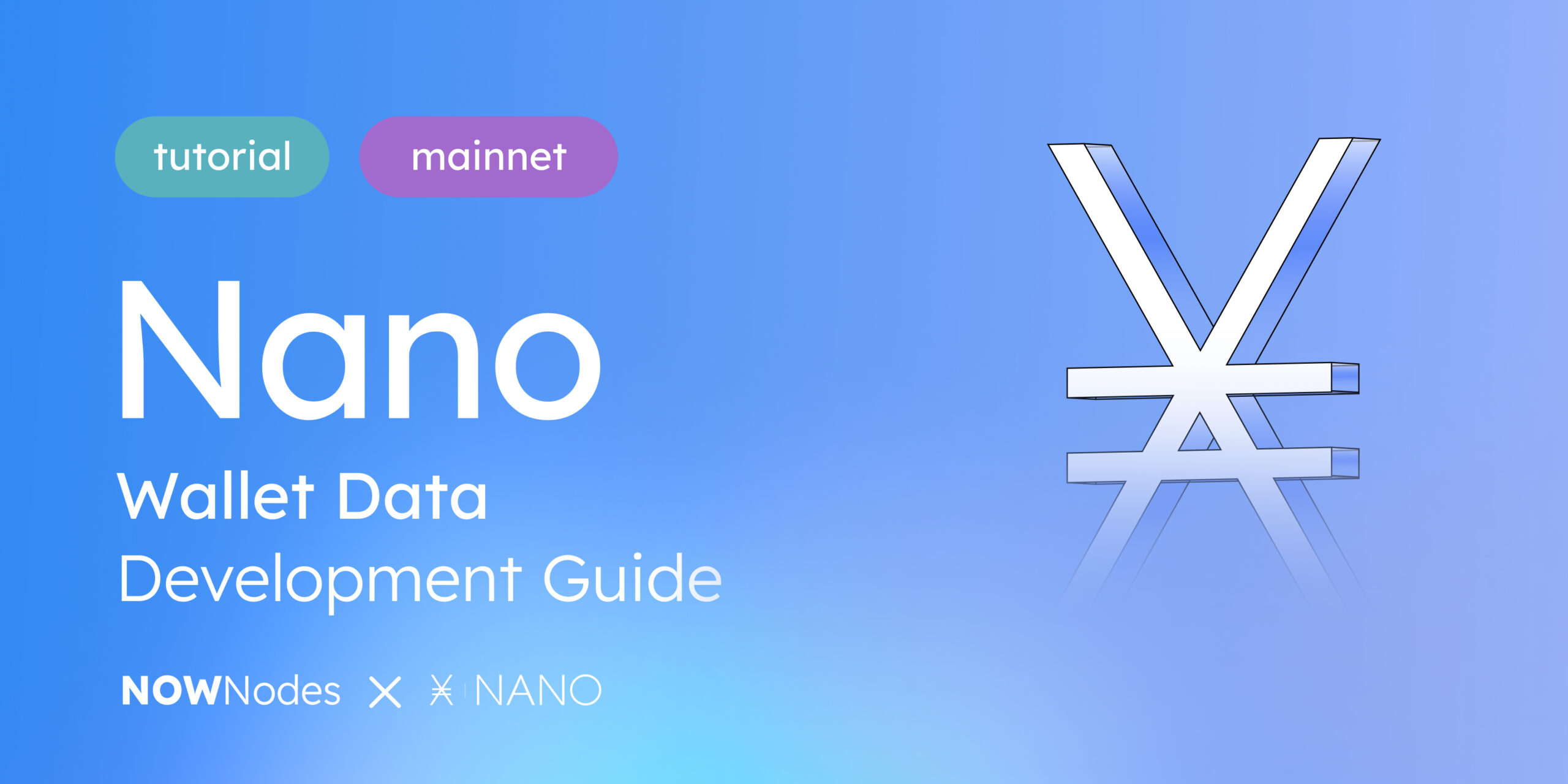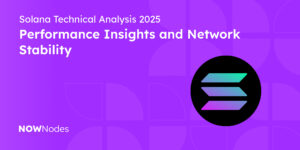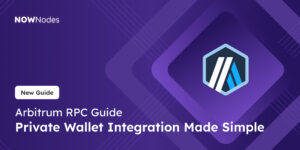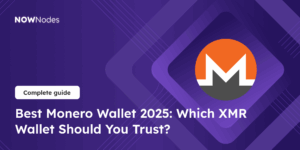In the ever-evolving world of cryptocurrencies, the need for efficient, secure, and user-friendly digital transactions has never been greater. Among the options that are available to crypto users, Nano is being highlighted for its unique approach to blockchain technology and transaction efficiency. Our guide delves into the Nano blockchain, explores its anonymity features, reasons behind its growing popularity, and provides a detailed tutorial on retrieving wallet information via a Nano RPC Full Node.
This guide was prepared by NOWNodes – a Nano RPC Full Node provider. We are Nano ecosystem contributors and support developers who expand the Nano ecosystem. Let’s dive into this tutorial.
What is Nano Blockchain?
Nano is a digital currency designed to provide instant transactions, zero fees, and a high degree of scalability. Unlike traditional blockchains that use a single, linear chain, Nano utilizes a block-lattice structure. Each account has its blockchain, allowing for asynchronous updates. This design not only speeds up transaction times but also reduces congestion and improves network scalability.
The consensus mechanism in Nano is called Open Representative Voting (ORV), where account holders vote for their chosen representatives, who then work to secure the network. This lightweight and efficient consensus model is a departure from energy-intensive Proof of Work (PoW) systems, making Nano an eco-friendly alternative in the cryptocurrency space.
NOWNodes supports Nano blockchain development tools for several reasons. One of them is the determined and clear vision of its impact and features that the network provides. More on this – below.
How Is It Different From Other Similar Coins?
First of all, Nano’s distinction lies in its focus on being a practical, everyday currency. Its infrastructure supports rapid, feeless transactions, making it ideal for microtransactions and everyday use. This contrasts with currencies like Bitcoin, which can suffer from high transaction fees and longer confirmation times, especially during peak periods.
Moreover, Nano’s approach to privacy and anonymity is on a high level. While it offers a degree of privacy by not directly linking accounts to real-world identities, all transactions are public and traceable within its ledger. This level of transparency ensures security and integrity that is enough for daily activities on the chain.
Why does Nano’s popularity grow among crypto enthusiasts?
Nano’s popularity among cryptocurrency enthusiasts can be attributed to several key factors. Firstly, its feeless structure makes it highly attractive for both small and large transactions, removing the barrier of transaction costs that can deter the use of cryptocurrencies for everyday purchases.
Secondly, the instant transaction capability of Nano, thanks to its innovative block-lattice structure, addresses one of the most significant pain points in the cryptocurrency world—transaction latency. This has made Nano particularly popular in regions with high transaction volumes or where traditional banking systems are inefficient.
Finally, the environmental aspect of Nano’s ORV consensus mechanism appeals to a growing segment of the crypto community concerned about the carbon footprint of digital currencies. By eliminating the need for energy-intensive mining, Nano presents a more sustainable alternative, aligning with global efforts towards environmental sustainability.
Looks like it’s time to practice integrating Nano!
Retrieving Wallet Information via Nano RPC Full Node
Users directly interact with Nano blockchain to obtain and process wallet information from the Nano network. While common users and holders can use their familiar tools like Nano XNO block explorers or wallets, crypto enterprises perform a lot of tasks to build a sophisticated solution.
Nano RPC Full Node is one of the easiest ways for developers to retrieve all important wallet data. It allows for direct communication with the node, enabling users to perform various operations such as checking account balances, sending transactions, and querying historical transaction data.
Here is a step-by-step guide on how to do so!
Step 1. Obtain an access to Nano RPC Full Node
First, make sure you have access to Nano nodes via the NOWNodes API key. This key is essential for authenticating your requests to the NOWNodes service. Visit Nano Development Hub at NOWNodes to obtain an API key.
Step 2. Sending the Request to Nano Blockchain
Use the NOWNodes Nano RPC Full Node endpoint to connect to Nano blockchain ledger data.
We will perform these requests via any preferred API environment: Postman, Insomnia, or any other solution.
We will start with the general data – the balances of the wallet. In this case, we will have to use the wallet address. Tools and developers generate the address, so make sure you have the list of confirmed addresses. Here’s an example of a request you can try:
curl --location 'https://nano.nownodes.io/' \
--header 'api-key: <your-api-key>' \
--header 'Content-Type: application/json' \
--data '{
"action": "wallet_balances",
"wallet": "XXXD1BAEC8EC208142C99059B393051BAC8380F9B5A2E6B2489A277D81789F3F"
}'One important thing – the answer to this request or call may contain unconfirmed blocks, so developers do not recommend using it in any processes or integrations requiring only details from blocks confirmed by the network.
For more detailed information we will use other wallet methods. In order to retrieve more sophisticated data, you need to confirm whether the account exists on the address. The method wallet_contains will help!
This call will include the Nano account address. This information is easily found in the Nano block explorer. Let’s take a look at the request:
curl --location 'https://nano.nownodes.io/' \
--header 'api-key: your-api-key' \
--header 'Content-Type: application/json' \
--data '{
"action": "wallet_contains",
"wallet": "XXXD1BAEC8EC208142C99059B393051BAC8380F9B5A2E6B2489A277D81789F3F",
"account": "nano_3e3j5tkog48pnny9dmfzj1r16pg8t1e76dz5tmac6iq689wyjfpi00000000"
}'If you receive 200-type answers, it means that everything is settled for the further development. From now on, feel free to utilize any method you need for development purposes. All of them are in our NOWNodes Docs collection – access it here.
Conclusion
Nano’s unique infrastructure and focus on instant, feeless transactions make it a compelling choice for both cryptocurrency enthusiasts and those looking for practical, everyday digital currency solutions.
For developers who interact with Nano blockchain for the first time, the flow may be not that familiar. We hope that this tutorial was helpful and met your expectations 🙂
Make sure you leave your feedback in the comments in our Telegram Builders Community or just leave us a Direct Message at X/Twitter.
Let’s expand Nano’s adoption!



